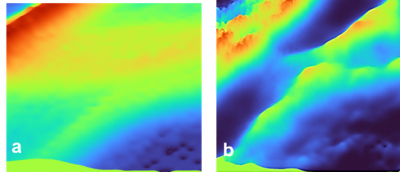
Computational imaging technologies have substantially reduced the costs of imaging systems and at the same time significantly improved their performances such as three-dimensional imaging capability, multispectral imaging with a monochrome sensor etc., However, computational imaging methods are not free of challenges. Most, if not all, computational imaging methods require special optical modulators such as scatter-plates, Fresnel zone apertures and coded apertures that map every object point into a special intensity distribution. A computational method reconstructs the recorded intensity distribution into multispectral, multidimensional images. Since an intermediate reconstruction step is involved, computational imaging methods are termed indirect imagers while conventional lens-based imaging systems are direct imagers. The need for special optical modulators in computational imaging is due to the limitations in the reconstruction mechanisms. Furthermore, even though the above computational methods can render additional information than conventional lens-based imagers, the quality of reconstruction has never been to the level of a lens-based imager.
In this research work, a novel computational holography method has been developed by combining two well-known deconvolution methods namely the maximum likelihood algorithm developed by Lucy and Richardson and non-linear correlation developed by Rosen. This Lucy-Richardson-Rosen algorithm is capable of deconvolving intensity distributions obtained from direct imagers such as Cassegrain objective lenses. This development links direct and indirect imaging methods creating a major impact. When the imaging condition is satisfied, a direct image of the object is formed and when the imaging condition is disturbed, the computational reconstruction method is applied. The new method was applied to image chemical samples at the infrared microspectroscopy system of the Australian synchrotron. From a single camera shot of the chemical sample and the known three-dimensional point spread functions of the Cassegrain objective lenses, a complete three-dimensional image of the chemical sample is generated by the Lucy-Richardson-Rosen algorithm.
The research group of Prof. Saulius Juodkazis, at Swinburne University of Technology, has developed a new computational holography technique for rapid imaging of biochemical samples. The infrared microspectroscopy unit uses a nitrogen-cooled Mercury-Cadmium-Telluride single-pixel detector, a tightly focusing Cassegrain objective lens pair and a point-by-point scanning approach to record two-dimensional information of a sample. The scanning method is time-consuming limiting the number of samples that can be studied during a synchrotron beamtime project.
In this project, the single-pixel detector was replaced by a focal point array detector, and a weaker Cassegrain objective lens was used to increase the beam diameter in the sample plane. This method enabled single-shot two-dimensional imaging of the samples. Computational imaging methods such as coded aperture correlation holography can transform conventional imagers into three-dimensional imagers.
Unlike the previous computational imaging methods, in the proposed method, direct imaging and indirect imaging can co-exist. When the imaging condition is satisfied, the system behaves as a direct imager, and when the imaging condition is not satisfied, the system behaves as an indirect imager requiring computational reconstruction. A new reconstruction method was designed by combining two well-known reconstruction methods, namely the maximum likelihood algorithm developed by Lucy and Richardson and the non-linear reconstruction method developed by Rosen. The new Lucy-Richardson-Rosen algorithm reconstructed three-dimensional information of samples from a single camera shot of the samples and pre-recorded three-dimensional point spread intensity distribution. Consequently, the developed method significantly improved the speed of imaging using the infrared microspectroscopy unit.
While the new algorithm aided computational imaging technique have transformed the conventional infrared microspectroscopy unit into a three-dimensional infrared microspectroscopy unit, further investigation on the algorithm revealed surprising aspects of the algorithm. The algorithm was able to deconvolve numerous deterministic optical fields significantly better than existing computational reconstruction methods. It is believed that the new reconstruction algorithm will revolutionise the field of computational imaging where scattering fields can be replaced by deterministic ones with a better signal-to-noise ratio and lower photon budget.










